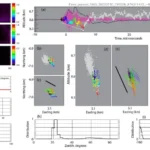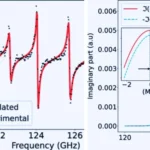Key Points
- Researchers created a new quantum resistance standard using the Quantum Anomalous Hall Effect.
- The standard operates without a magnetic field, enhancing precision and simplifying applications.
- Current limitations include the need for extremely low temperatures and currents. The team is working to improve commercial feasibility.
- The research is part of the ct.qmat Cluster of Excellence, focusing on topological quantum materials.
Researchers from the University of Würzburg and Germany’s national metrology institute, PTB, have successfully implemented a groundbreaking quantum resistance standard utilizing the Quantum Anomalous Hall Effect (QAHE). This innovation represents a significant advancement in precision measurements critical for modern technologies like high-tech sensors, microchips, and flight control systems.
Published in Nature Electronics, the research establishes a highly stable and universal standard without requiring an external magnetic field, which has long been challenging in quantum metrology.
Traditionally, the measurement of electrical resistance has relied on the Hall Effect, which generates a Hall voltage when a current-carrying conductor is subjected to a magnetic field. The Quantum Hall Effect (QHE) emerges in extremely thin conductors, where resistance quantizes into fixed, universal values regardless of the material’s properties. These values form the foundation for resistance standards. The QAHE extends this principle by enabling the Quantum Hall Effect without an external magnetic field, offering practical advantages for calibration and metrological applications.
This breakthrough is particularly significant for defining fundamental physical units. Measuring resistance and voltage standards simultaneously is critical for determining the kilogram regarding electrical quantities. The absence of a magnetic field simplifies the process, aligning it with QAHE-based systems. Previous attempts to use QAHE at zero magnetic fields lacked the precision needed for quantum metrology. However, the new experiment has achieved the accuracy required, placing the QAHE-based standard on par with earlier QHE-based methods.
Despite this success, the application of QAHE in practical and industrial contexts remains limited by the necessity of extremely low temperatures and low electrical currents. The research team is collaborating with the Physikalisch-Technische Bundesanstalt (PTB) and the European QuAHMET consortium to refine the technology to overcome these challenges. These efforts aim to make the new standard commercially viable and extend its use in industries requiring ultra-precise resistance measurements.
This research is part of the Cluster of Excellence ct.qmat, jointly operated by the University of Würzburg and TU Dresden. The cluster unites over 300 scientists from more than 30 countries to study topological quantum materials under extreme conditions. Funded by Germany’s Excellence Strategy, ct.qmat represents a collaborative effort to uncover new quantum phenomena and advance technological frontiers.










